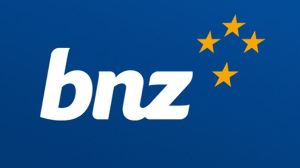They appear to be following cues from the central bank on OCR changes and mortgages on short terms are rising again.
In August the RBNZ cut the OCR and indicated it would do so again this month. Since then the dismal GDP figures for the second quarter started a flurry of economists’ projections about whether it should be a 0.25% or a much bigger 0.50% cut.
At the press conference after August’s cut, Governor Christian Hawkesby said monetary policy "lags" are "long and variable".
“There’s a lot of uncertainty about how quickly these things will work through.
"That’s what gives us the confidence that when we say monetary policy works, we say that interest rates low or high do have an impact and you’ve just got to have confidence it will work its way through.
"The challenge is there will be other things that go on along the way and that’s where we need to constantly re-adjust or recalibrate about whether we have done enough or we need to do more and particularly in the zone that we are in at the moment where we’ve done a lot in a rapid period - now we start feeling our way."
This appears to have prompted a reversal of the trend in the past few months of home owners plumping for the longer two-year fixed mortgages, which are at interest rates of 4.49% at the major banks.
In August the amount of new mortgage money on floating rates rose 5.1% to 26.6%, up from 21.6% in July.
Investors have been leading the way. They have been favouring floating rates and terms of fewer than two years and during the month 93.2% of new lending was on those terms.
Floating terms accounted for 29% of all new lending, up 65% from 22.5% the previous month. Just over 41% of new lending was on one-year fixed terms, down 1.2% from 42.4%.
The amount of owner-occupier mortgages on floating rose from 20.7% to 25%.
Owner occupier loans on floating and short-term fixed rates of less than one year represented 70.5% of new lending.
One-year fixed terms dropped by 1.6% from 40.9% in July to 39.3% the following month, while the six-month rate is waning in popularity, declining from 6.7% in July to 6.2% in August.
Total monthly new residential lending dropped to $8.2 billion in the month, down from $9 billion in July, but compared to August last year was up 19.6% from $6.8 billion.



Comments
No comments yet.
Sign In to add your comment